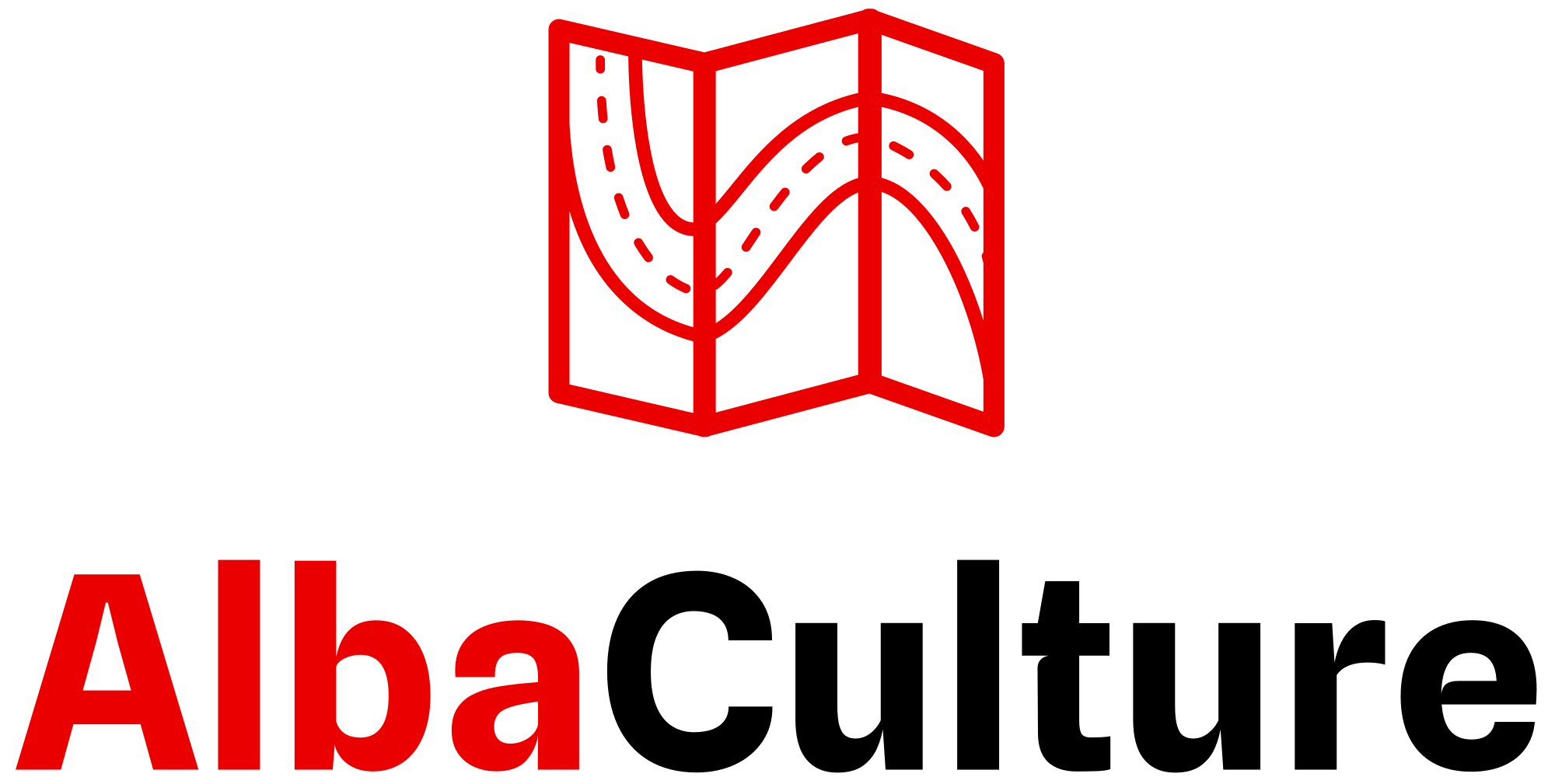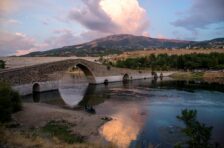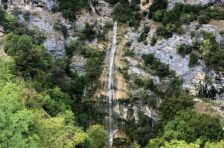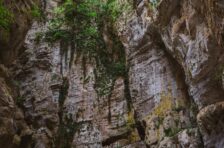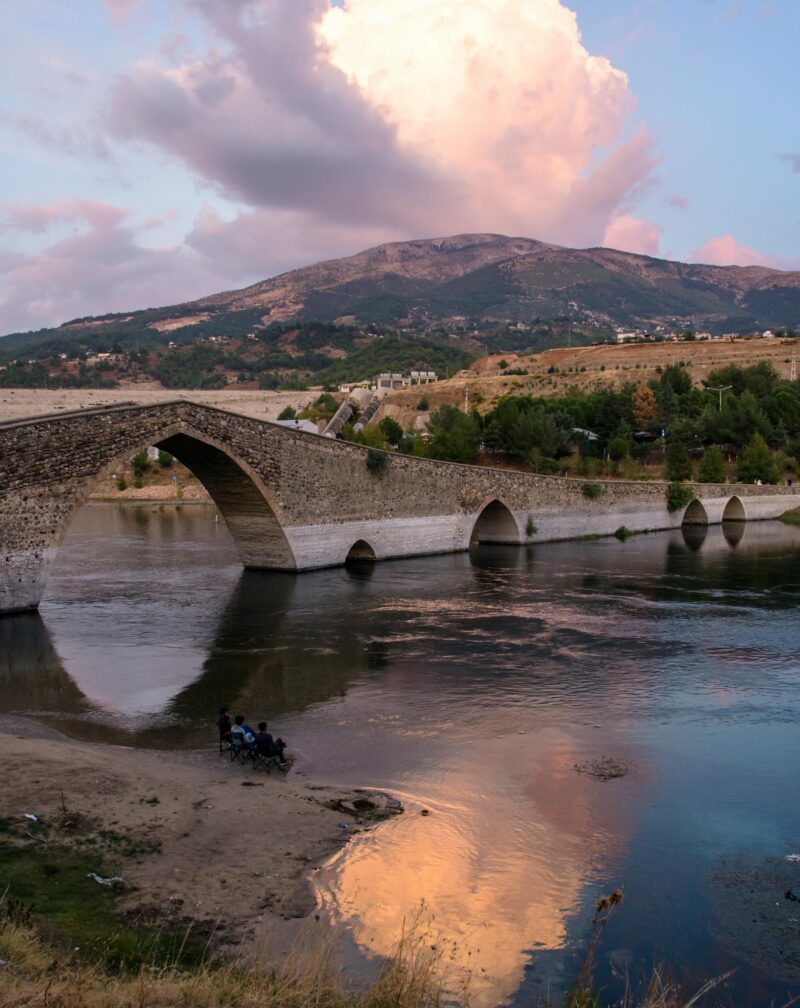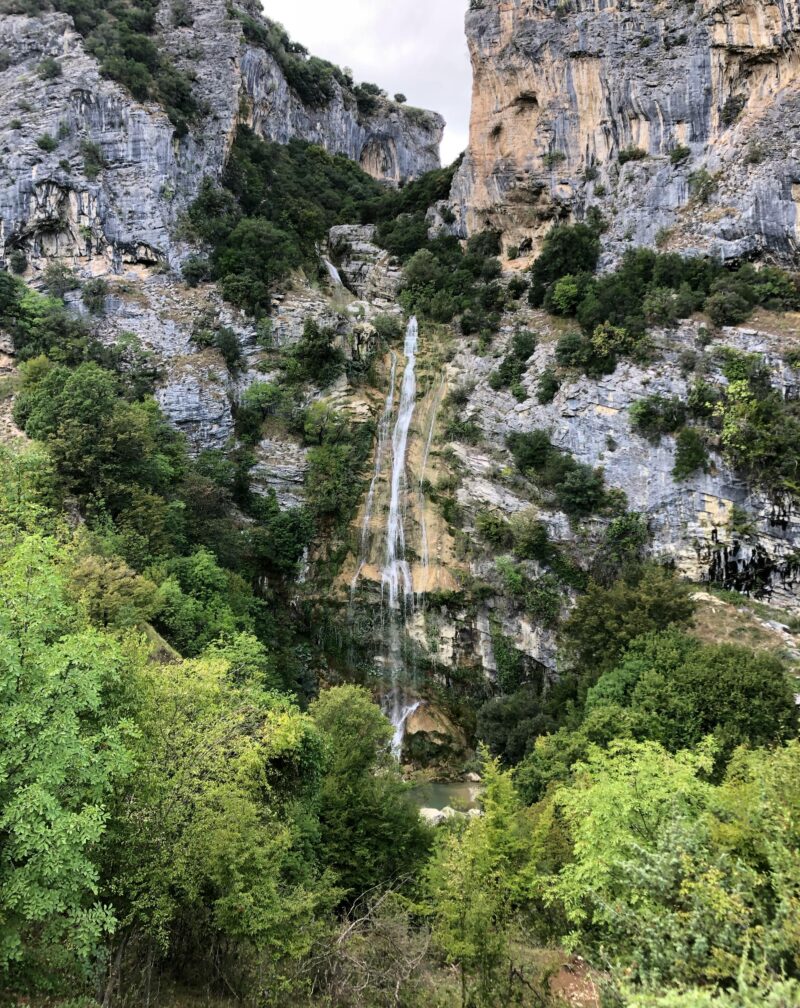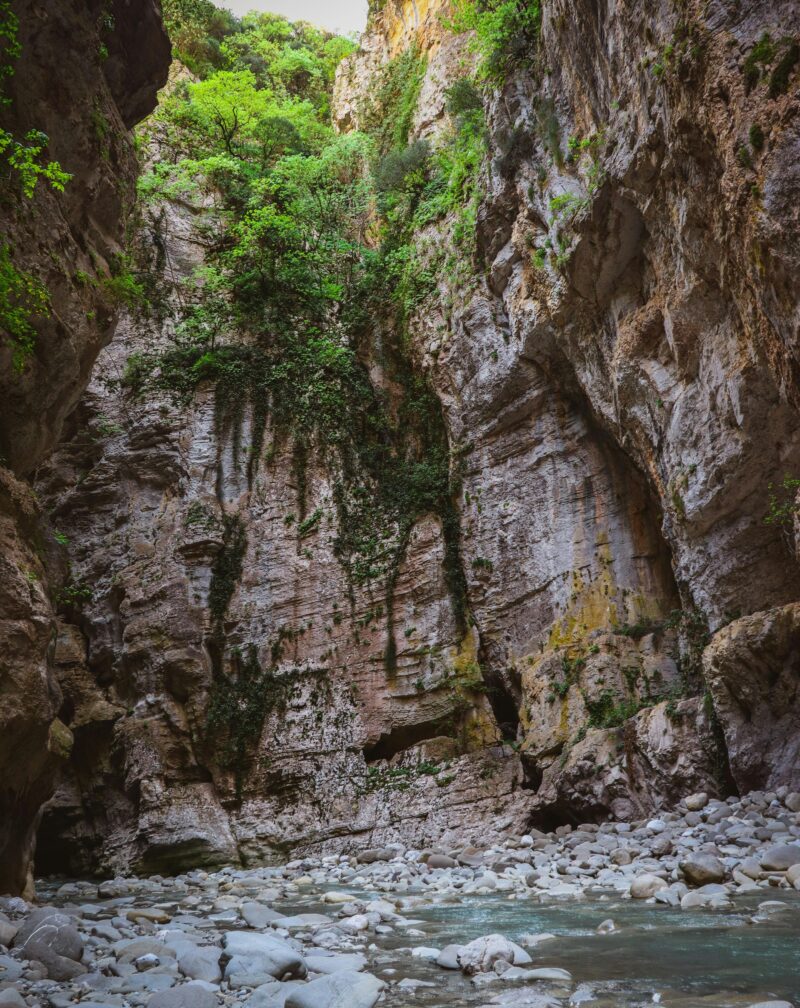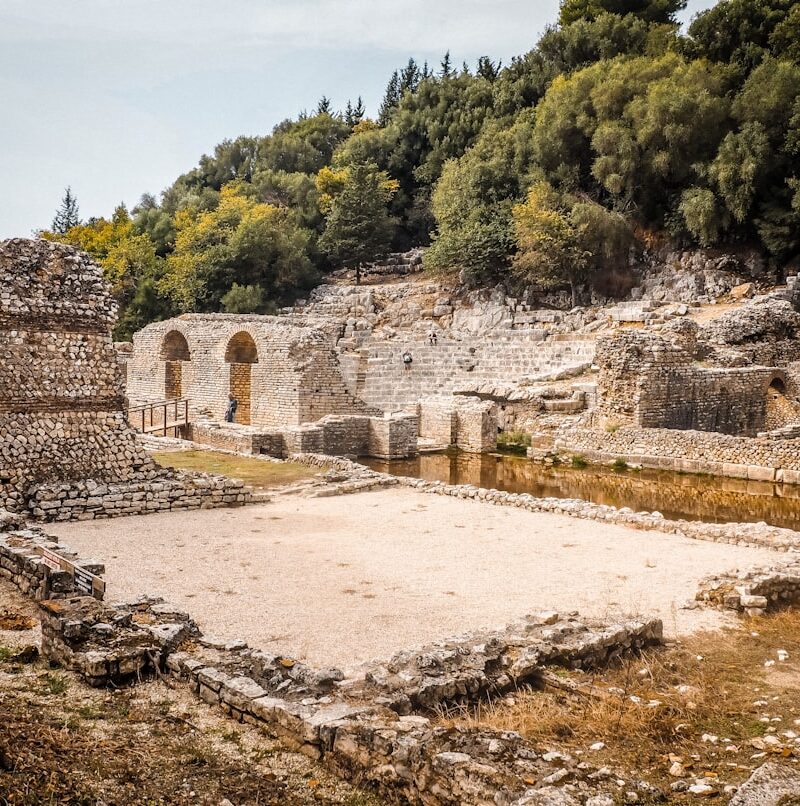The Albanian Coastal Gateway
Saranda sits at Albania’s southern tip, directly across from Corfu Island, serving as the country’s main beach resort town and gateway to the Riviera. It’s not subtle or quaint—it’s beach town with hotels, restaurants, bars, and seasonal tourism energy.
The Albanian Riviera stretches north from Saranda—dramatic coastline where mountains plunge into the Ionian Sea, creating beaches, coves, and some of Albania’s most photographed scenery.
Saranda Town
The town itself is wrapped around horseshoe bay with promenade running along the waterfront. It’s a functional resort base rather than a cultural destination.
Waterfront Promenade Walking the promenade reveals Saranda’s rhythm—cafes and restaurants facing the sea, boats bobbing in harbor, Corfu visible across the strait, mountains rising behind town.
Evening brings crowds—families strolling, young people socializing, tourists eating seafood. The atmosphere is a Mediterranean resort casual—relaxed, social, focused on simple pleasures of seaside life.
Lëkurësi Castle Ruins sit on the hill above Saranda, reached by car or strenuous walk. The castle itself is modest—partial walls, limited restoration—but the views are excellent: Saranda below, bay spreading blue, Corfu across water, coastline extending north and south.
A restaurant operates within the castle grounds. Evening drinks with sunset views are popular activity.
Entry to the castle area is free or minimal. Restaurant prices are moderate with a view premium built in.
Beaches Near Saranda Saranda’s town beaches are adequate but not spectacular pebble, somewhat crowded in summer, water is clear and swimmable.
Better beaches exist nearby:
- Santa Quaranta Beach – just south of town, slightly less crowded
- Monastery Beach – near old monastery ruins, quieter
- Mirror Beach (Pasqyra) – 5km south, pebbly but beautiful water
All are accessible by taxi or rental car. In summer, boats shuttle between beaches.
Ksamil – The Albanian Caribbean
Located 15 minutes south of Saranda, Ksamil is Albania’s most famous beach destination. The comparison to Caribbean or Maldives isn’t hyperbole—turquoise and blue water, white pebble beaches, small islands offshore that you can swim to.
Three or four small islands sit just offshore, each with beaches. The water is shallow enough to wade most of the way, then swim the final distance. People picnic on islands, sunbathe, swim.
The main beach gets crowded in July-August—umbrellas and sunbeds packed tightly, restaurants full, parking challenging. June and September offer similar beauty with manageable crowds.
Logistics:
- Beach entrance is usually free
- Sunbed and umbrella rental: 500-1,000 lek per day depending on location and season
- Restaurants and cafes line the beach
- Parking can be difficult peak season—arrive early or be patient
Water activities:
- Swimming (obviously)
- Snorkeling (bring gear, water is clear)
- Kayaking (rentals available)
- Paddleboarding
- Boat tours to islands and coves
Ksamil works as day trip from Saranda or you can stay there—several hotels and guesthouses exist. Staying means beach access before crowds arrive.
Butrint National Park
Major archaeological site 20 minutes from Saranda (covered in detail in separate Butrint section). It’s UNESCO World Heritage Site with Greek, Roman, Byzantine, and Venetian ruins.
Most Saranda visitors include Butrint in their plans—it’s close, significant, and provides cultural balance to beach time.
Blue Eye (Syri i Kaltër)
Natural spring creating deep blue pool surrounded by forest, about 25km from Saranda inland toward Gjirokastër.
The spring pumps out huge volumes of water—over 6 cubic meters per second. The depth creates an intense blue color. Water temperature stays around 12-13°C year-round.
You can swim in the shallow areas (deep center is too cold and dangerous). Many people just observe, photograph, and walk forest trails.
Getting there: Car or organized tour. The access road winds through beautiful countryside.
Best time: Spring and early summer when water volume is highest. Summer works but can be crowded. The forest provides shade even in the heat.
Entry fee: Around 100 lek for park access.
The Albanian Riviera – North from Saranda
The coastal drive north from Saranda (or south from Vlora) passes through Albanian Riviera—stretch of coastline celebrated for dramatic beauty.
Lukova and Borsh
First major beaches heading north.
Borsh has Albania’s longest beach (7km), mostly pebble, backed by olive groves. It’s less developed than northern Riviera beaches, which means fewer facilities but more space.
Borsh village sits on a hillside above the beach with old castle ruins. Traditional stone houses, narrow lanes, quiet life contrasting with beach activity below.
Lukova is similar—long beach, developing slowly, authentic village feeling.
Both work for travelers seeking beaches without heavy development.
Qeparo (Old and New)
Qeparo i Vjetër (Old Qeparo) clings to mountainside—stone village with traditional architecture, many houses abandoned or being restored. Walking through reveals glimpses of old Albanian village life.
Views from the upper village are spectacular coast spreading north and south, mountains rising behind, sea glittering below.
Qeparo i Ri (New Qeparo) is a beach settlement with hotels, restaurants, and summer activity. It is less atmospheric than old village but functional for beach accommodation.
Porto Palermo
Stunning bay with Ali Pasha’s triangular castle on peninsula. The castle is small but photogenic, built in the early 19th century by Ali Pasha of Ioannina.
The bay is perfect horseshoe shape, water clear and calm. During the communist era, it housed secret submarine bases—tunnels carved into mountains, pens for submarines, now abandoned but visible.
Activities:
- Castle visit (200 lek entry)
- Swimming in pristine bay water
- Exploring submarine base ruins (unofficial access, be careful)
- Kayaking around bay
Lunch: Small restaurants serve fresh seafood with bay views.
Porto Palermo is highlight of Riviera drive—combination of history, natural beauty, and that slightly surreal submarine base.
Himara
Larger town with mix of old hillside village and newer beach development. It has significant Greek ethnic population, historically tied to Greek culture.
Old town (Himara e Vjetër) climbs hillside with traditional stone houses, narrow streets, churches, and mountain views.
The beach area has hotels, restaurants, and bars creating a resort atmosphere. Several beaches stretch along the coast—Livadhi, Spilea, Potami—each with different characters.
Himara serves as a good base for exploring the Riviera—central location, good accommodation options, services and facilities.
The town maintains a more authentic life than pure tourist destinations while offering necessary infrastructure.
Jale and Gjipe Beaches
Jale is a party beach—beach bars, music, young crowds, active nightlife in summer. If you want social beach scene, Jale delivers.
Gjipe is the opposite—hidden canyon beach, reached by hiking down from road (20-30 minutes) or by boat. The canyon walls create a dramatic setting, the beach is pebble, the water is pristine.
Gjipe has minimal facilities—maybe a small beach bar, otherwise you bring everything. The hike keeps crowds down. It attracts younger, more adventurous travelers.
Swimming at Gjipe is excellent. The canyon walls provide afternoon shade. Kayaking into the canyon is popular.
Dhërmi
One of Riviera’s most developed beaches. The beach is beautiful—white pebbles, clear water, mountain backdrop. Summer brings beach clubs, restaurants, hotels, and significant crowds.
The upper village (Dhërmi i Vjetër) sits on a mountain with traditional houses, a Byzantine church, and stunning coastal views. The contrast between old village and beach development below shows Albania’s tourism transformation.
Dhërmi works for travelers wanting beach beauty with services and social atmosphere. It’s not remote or undiscovered, but it is genuinely beautiful.
Palasa Beach
First major beach after descending Llogara Pass. Long pebble beach, relatively undeveloped compared to Dhërmi or Himara.
The setting is dramatic mountains rising immediately behind the beach. It’s exposed to wind more than protected bays, which can make it rough some days but also keeps it cooler in peak heat.
Llogara Pass and National Park
The mountain pass separating the Riviera from northern coast is an experience in itself. The road climbs to over 1,000 meters through dense Mediterranean forest before descending via dramatic switchbacks to coast.
Llogara National Park protects ancient forest—black pine, fir trees, centuries old. The air is noticeably cooler and fresher at altitude.
Caesar’s Pass viewpoint offers stunning views—mountains falling to sea, coastal panorama, Riviera stretching south.
Multiple restaurants serve traditional food with views. It’s a popular lunch stop on Riviera drives.
The pass can be cool even when the coast is hot—bring a light jacket. In winter, snow sometimes closes the road temporarily.
Driving the Riviera
The coastal road (SH8) from Vlora to Saranda is one of Albania’s most scenic drives. It takes 3-4 hours without stops, but you’ll stop frequently for views.
Conditions: The road is mostly good now after improvements. Some sections are narrow, many curves, drops to sea. Drive carefully, especially if you’re not used to mountain roads.
Direction matters: Driving south (Vlora to Saranda) keeps you on the seaside, making viewpoint stops easier. Driving north means crossing traffic for views.
Best time: Morning light is beautiful. Late afternoon brings golden hour glow. Midday summer can be very hot.
A rental car is ideal for Riviera exploration—freedom to stop at beaches, viewpoints, villages at your pace. Buses connect main towns but miss smaller spots.
Practical Riviera Information
When to Visit:
- June: Beach weather begins, crowds are manageable, prices reasonable
- July-August: Peak season, hot, crowded, expensive, best weather
- September: Warm water, fewer crowds, lower prices, ideal
- October: Still pleasant, very quiet, some places closing
- November-May: Off-season, most beach facilities closed, cool/cold
Accommodation: Summer booking ahead is essential, especially Ksamil, Dhërmi, Himara. Prices are significantly higher July-August. During the off-season, many places close entirely.
Food: Fresh seafood is standard—grilled fish, mussels, calamari. Prices are reasonable except for most touristy spots. Expect 1,000-2,000 lek for fish mains.
Costs: Albanian Riviera is more expensive than interior Albania but cheaper than Greek islands or Croatian coast. Budget €40-70 daily mid-range, €100+ for comfortable beach vacation.
Beaches: Almost all are pebbles or small stones, not sand. Water shoes help if you’re sensitive to walking on pebbles. The water is generally clear and clean.
Activities Beyond Beaches:
- Boat tours exploring coast and caves
- Kayaking
- Snorkeling (bring gear)
- Hiking in Llogara
- Village exploration
- Castle and historical site visits
The Saranda/Riviera Experience
This is Albania’s beach holiday destination. Expectations should align accordingly—you’re not discovering hidden paradise, you’re visiting an increasingly popular Mediterranean coast.
The beauty is real. Those photos of Ksamil’s turquoise water aren’t edited. The mountains-meet-sea drama of Riviera is genuinely stunning. Porto Palermo’s Bay is actually that perfect.
But in July-August, you’re sharing it with many others. Ksamil beaches pack tightly. Coastal hotels fill. Restaurants have lines. It’s summer Mediterranean resort experience—pleasant but not solitary.
Visit in June or September for balance of good weather and manageable crowds. The water is warm, facilities operate, but intensity drops dramatically.
Or embrace peak season energy if you enjoy social beach atmosphere—meeting people, beach bars, active nightlife.
The Riviera hasn’t fully transformed into a resort zone yet. You still find quiet beaches, traditional villages, local life continuing alongside tourism. But it’s changing fast—more construction, more hotels, more organization. The window for experiencing it in transition is closing.
For now, it offers something increasingly rare in the Mediterranean—beautiful coast, clear water, good value, and sense you’re ahead of mass tourism curve. Croatia was like this 20 years ago. Greek islands 30 years before that. The pattern is predictable.
Visit while Riviera still feels more discovered than conquered, more authentic than packaged. It won’t stay this way forever, which isn’t necessarily bad for Albania’s economy but will change the traveler experience fundamentally.



